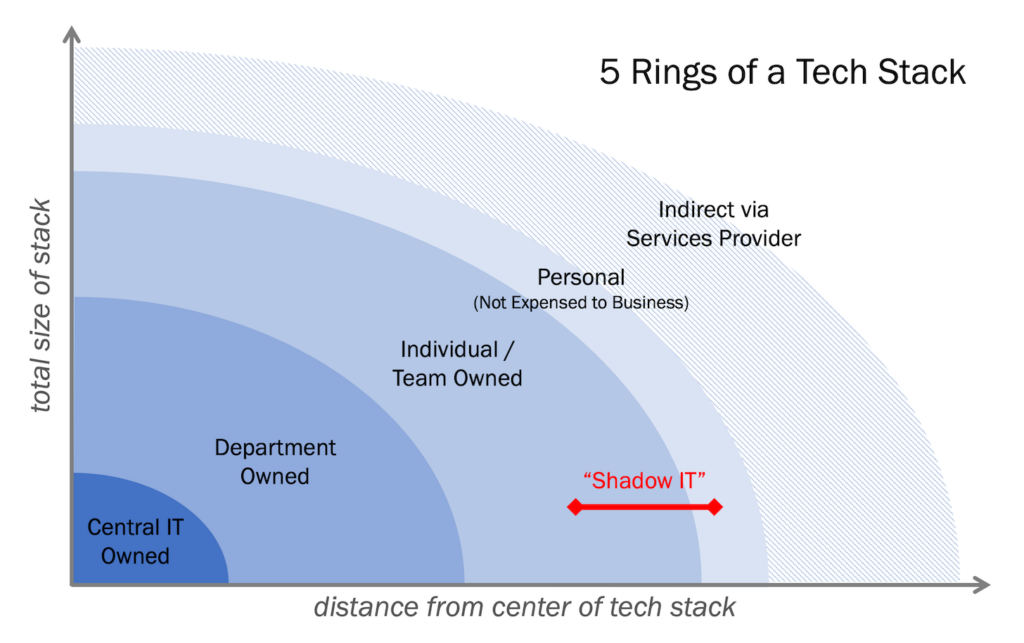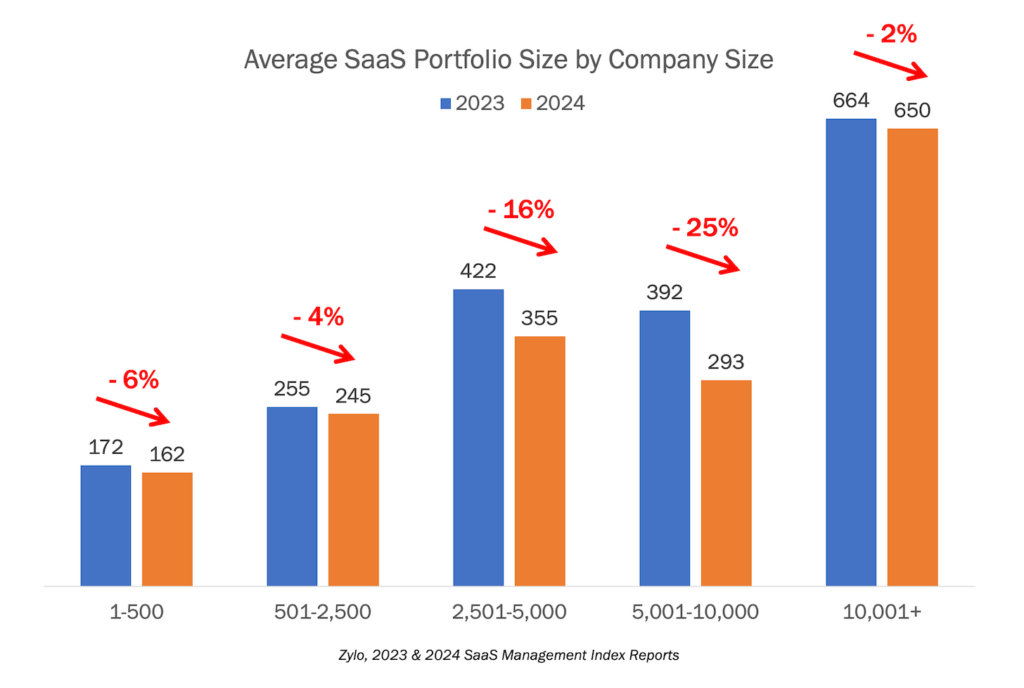
At the start of the year, I predicted 2023 would be a chaotic year for martech — yet the start of a truly massive wave of growth for the industry. My inner critic argued that sounded a tad hyperbolic, which is not my usual schtick. But I assuaged my own skepticism by noting that such disruptive growth would ramp up over a period of several years. It wasn’t like this stuff was going to change overnight.
Man, did I underestimate this.
The iterative advancements in generative AI these past couple of months have come fast and furious, with no sign of slowing down anytime soon. GPT-4 is out in the world — and out of this world. The Turing test is suddenly a quaint relic from a bygone era. The critique that these large language models (LLMs) are just glorified probabilistic word sequencers is sounding increasingly naive when one looks at what they’re now capable of doing.
If you haven’t seen this chart of how GPT-4 (and GPT-3.5 before it) performs on tests such as the SAT, GRE, LSAT, and a wide set of AP exams, it’s worth absorbing this — especially the jumps GPT-4 acheived on quantitative tests only a few months later:
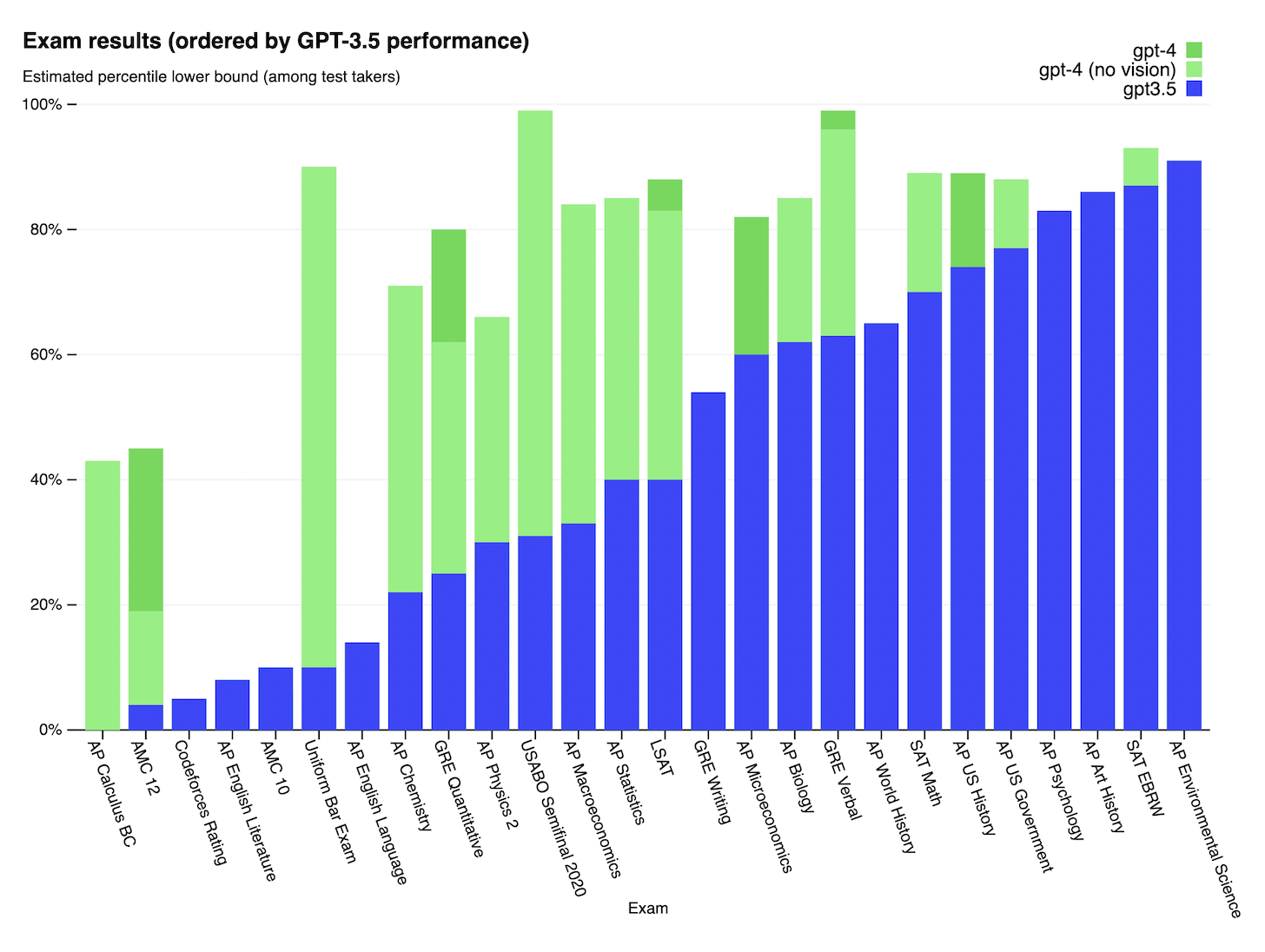
But as fascinating — and frightening — as chatting with ChatGPT, Bing (“call me Sydney, dear”), and soon Google’s Bard can be, these have been conversations in a bubble. Text in, text out. (Okay, now with GPT-4, image input too.) While the ouput was impressive, it was a bit like the Curator from Ready Player One: an amazing and sometimes amusing font of information, but not an action character.
The most obvious disruption these über-chatbots heralded was to search engines. Which as a $300 billion advertising market today and arguably the #1 digital channel in which marketers have fed the top of their funnel through SEO-optimized content marketing for 20 years is no small disruption. It’s not just a Code Red for Google. It’s a Code Red for digital marketing.
(Channeling a scene from A Few Good Men: “Digital marketing?” “Is there any other kind?”)
Software disruption = marketing disruption
But looking beyond marketing, LLMs are also being applied in software development. GitHub Copilot uses the OpenAI engine to help programmers write code. And in many cases “help” is a euphemism for writing the code for them. This isn’t quite the same as low-code/no-code — don’t worry, we’ll get to that in a moment. Code is created. It’s all there for you to see in full detail. It would be more accurate to call it low-coder/no-coder.
Same net impact as the no-code movement: empowering more people to create more software. (Just in case you thought The Great App Explosion was at risk of running out of steam.)
Yet another way in which these smart conversational engines are being harnessed is for new user interfaces to software applications. A excellent example of this is ChatSpot, a natural language interface for HubSpot, built by co-founder Dharmesh Shah. (Disclosure: I also work at HubSpot.)
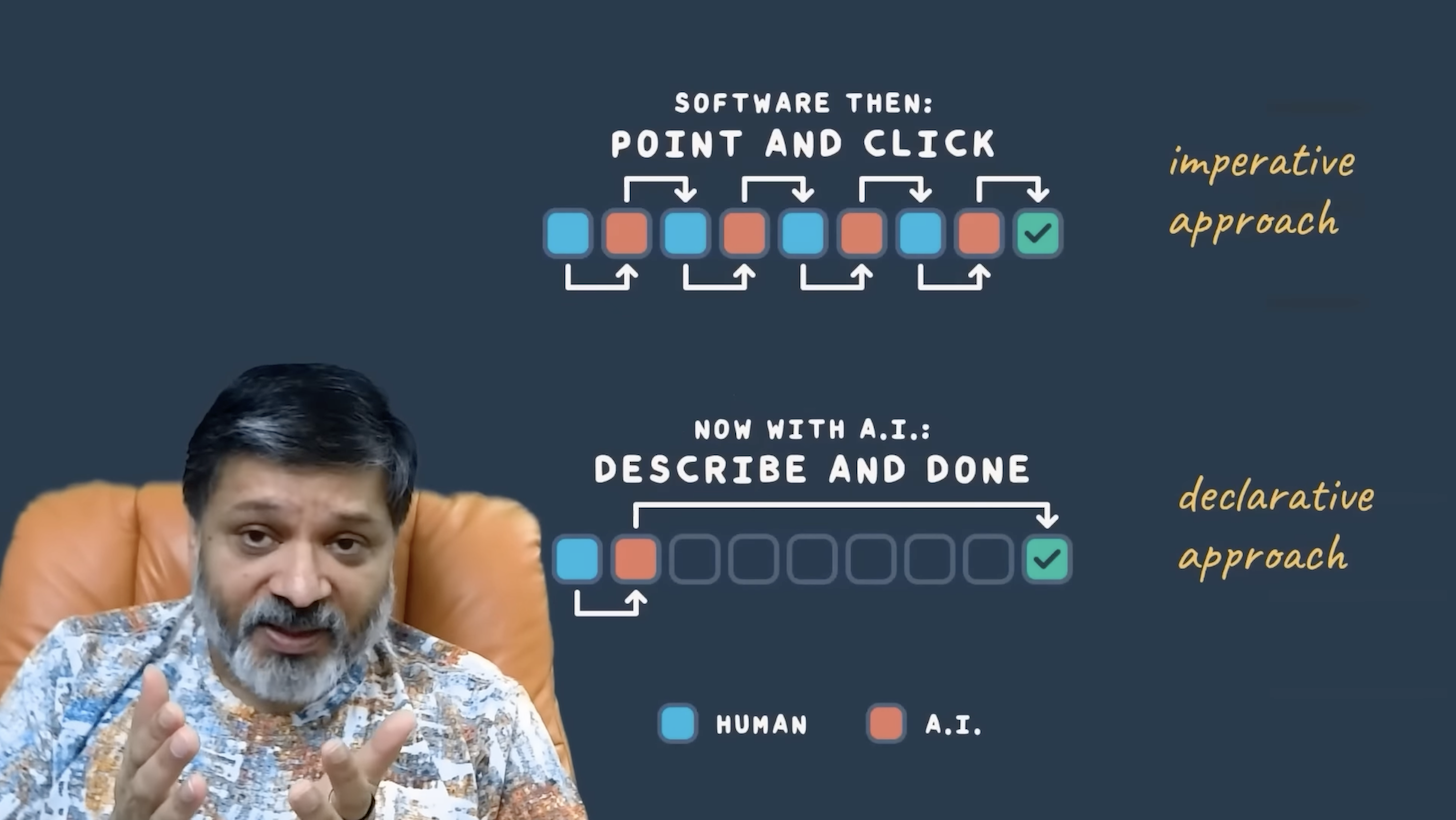
Genuinely useful and reliable natural language interfaces (“chat UX”) are transformative because they provide a layer of intent translation between people and software. Instead of navigating an app with a series of mouse clicks, you simply ask the app to do what you want. It’s a faster, more direct path to getting things done.
Dharmesh eloquently calls this a shift from point-and-click to describe-and-done. In his demo video, he runs through several examples. In one, adding a new contact — Ada Lovelace, nice — to your CRM and setting a task to follow-up with them in 4 days, what would have taken 20+ clicks before is now achieved with a single prompt.
For years, software users have been subject to a kind of Inverse Conway’s Law — we’ve had to adapt how we work to the way the software we purchased was built. Now, natural language interfaces like this start to break us free from that imposed structure. Software begins adapting to our asks, instead of us adapting our asks to it.
Ah, but wait, there’s more…
Composability and The Great Virtual App Explosion
It’s worth taking a closer look at ChatSpot’s high-level architecture. It combines multiple different, indpendent software apps — ChatGPT, HubSpot CRM, DALL-E, and Google Docs — and orchestrates them together. It’s a testament to the phenomenal cosmic power accessible today through API calls in the cloud. We can all stand on the shoulders of giant genies from the itty-bitty space of our laptops.

The magic here is connecting GPT-4 and its brethren to specialized, domain-specific data sources and software services. Get the natural language interface and general knowledge of ChatGPT, augmented with data and services of your CRM, the image generation features of DALL-E, and access to Google docs and spreadsheets.
In techno-lingo, this is known as composability, where different software components “can be selected and assembled in various combinations to satisfy specific user requirements.” Nick Coronges, CTO of R/GA, a world-renown digital agency, recently wrote a great article about composability in LLM apps that demonstrates another example of this by combining ChatGPT with Slack’s API.
(Let’s pause for a moment and appreciate that a marketing agency executive wrote that article. Over the past 15 years, the intersection of marketing and technology has come a loooooong way.)
It should be obvious that composability dramatically multiplies the number of apps in the world. It unleashes waves of combinational innovation, where different components can be mixed and matched in effectively an infinite number of niche contexts. That’s incredibly powerful in the hands of professional software developers.
But what if anyone could compose their own apps?
This is where the no-code movement has been headed, with tools such as Airtable, Bubble, Notion, Retool, Webflow, Workato, Zapier, and hundreds more, empowering non-technical business users to build “apps” without engineers. I put “apps” in quotes because you could argue that many of these are virtual apps in the environment of the no-code platform they were built in. Some might call them workflows or websites. But if they get the job done, does it matter what we call them?
This is one more blow to the shackles of Inverse Conway’s Law. A business user doesn’t have to be bound by a prescribed workflow or user experience invented by a far away product team at a completely different company. They can invent their own.
What if you could “compose” in natural language?
Still, building things with no-code tools has required a builder mentality and skillset. You didn’t have to be a software developer, but it was something that was mostly accessible to business ops professionals (the full spectrum of Big Ops roles) and true power users. The kind of person who is a whiz at spreadsheet formulas, for example.
But in the past two weeks, a series of announcements has shifted the playing field.
On March 16, Microsoft announced that it had incorporated its Copilot AI capabilities in its Power Apps, Power Virtual Agent, and Power Automate platforms. “To build an app, flow, or bot, you can describe it using natural language and copilot can build it in seconds,” said Charles Lamanna, Microsoft’s corporate VP for the platform. “It is that easy.”
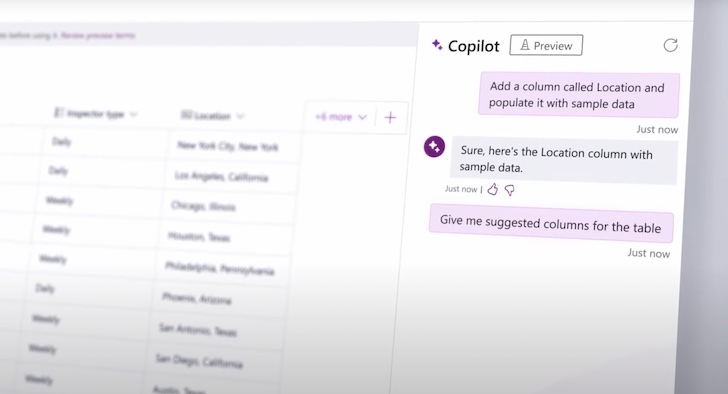
Then on March 23, OpenAI announced plugins for ChatGPT that let users augment ChatGPT with functionality to “access up-to-date information, run computations, or use third-party services.” The initial set included plugins for Expedia, FiscalNote, Instacart, OpenTable, and Wolfram Alpha.
So you could now ask ChatGPT for a menu for a dinner party, all the recipes for how to prepare it, and have it automatically load up a cart of those ingredients in Instacart to be delivered to your home. The only thing it won’t do is cook it for you. Yet. (Nudge to Hugh Durkin, head of product and platform at Fresco.) You can even have it make a restaurant reservation for you as a backup, just in case.

But the plugin that caught my eye — indeed, caused my eyes to fly wide open — was Zapier, a no-code iPaaS that lets you automate workflows across more than 5,000 different apps. They described a few of the initial use cases this plugin supports, which let you ask ChatGPT to look up data, send emails, fire off Slack notifications. Useful, albeit relatively simple actions. But importantly: all controlled via natural language.
It’s not hard to imagine that extending across Zapier’s entire portfolio of integrations, enabling more and more sophisticated workflows to be executed, merely by telling ChatGPT what you want to happen. Those workflows could span many different apps in your stack, leveraging data and functionality across any of them. But you won’t need to know or care about those app boundaries.
This is composability for everyone. And it’s revoluationary.
We’re just at the cusp of this revolution. But the supercollision of AI and composability will radically transform how we work with software on a highly accelerated basis from this point forward. It will change it for marketers. And it will change it for our customers.
And my hyperbole-allergic inner skeptic is nodding wordlessly in agreement.
P.S. Join us on May 2 for a free, online Best of Breed Marketing Summit. We will be covering this topic in more detail, along with the release of the 2023 marketing technology landscape, graduate-level talks from martech luminaries from the around the world, and a celebration of the 2023 Stackies Awards. (You are sending in a slide of your stack to The Stackies this year, right? We’re donating up to $10,000 to charity for those who do.)

